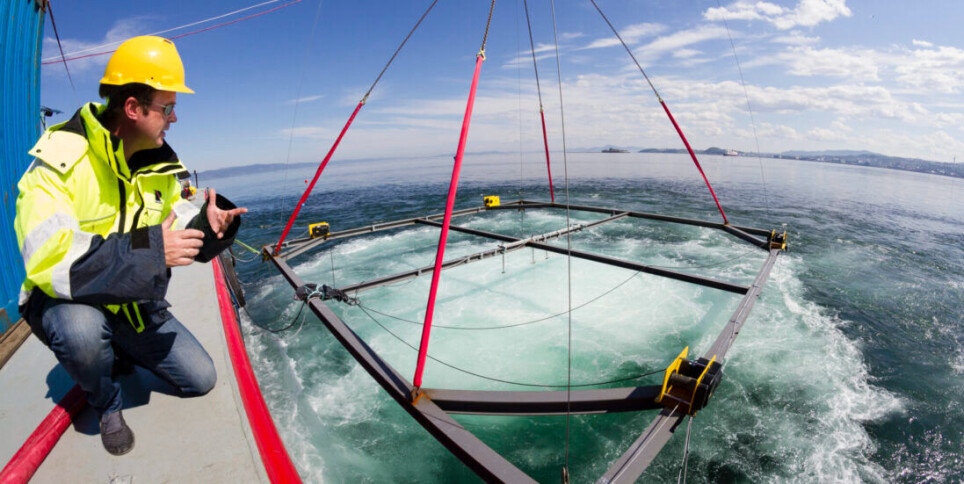THIS ARTICLE/PRESS RELEASE IS PAID FOR AND PRESENTED BY SINTEF - read more

“It is by no means impossible to repair major pipeline damage on the seabed”
Norway has developed subsea technologies that you may never have heard of to ensure the safe operation of Norwegian oil and gas installations. Experts are ready and waiting to assist in the Baltic Sea.
“Most things can be fixed on the seabed, but an important factor is the depth at which the damage lies. A diver-assisted system can be used at depths of up to 180 metres, but operations in deeper water must be fully remotely controlled,” Ragnhild Aune explains. She is an internationally certified welding engineer (IWE), and a senior research consultant at the research organisation SINTEF.
Her expertise and that of her colleagues is in great demand after what appears to be sabotage of the Nord Stream 1 and 2 gas pipelines.
Full remote control of a subsea operation is far more demanding than carrying out repairs using divers. However, suitable systems are available.
Aune and her colleagues have more experience with such technology than most others. They have been involved in the development and qualification of welding equipment for both Nord Stream projects, as well as in lifetime analyses and assessment of potential fracture damage in connection with Nord Stream 1.
Constant contingency capability
Aune believes that Norwegian actors are well prepared for any accidents that may occur, and that we are well versed in how potential damage can be repaired on the seabed.
“It is by no means impossible to repair major pipeline damage,” she says.
Damage is rare, but happens as a result of material fatigue, impact, wear, adverse chemical processes, pipeline twisting, and other unexpected physical incidents.
Fortunately, the Nord Stream pipelines are in shallow waters and the damage is located at depths of no more than 100 metres.
This means that it is possible to carry out repairs using a diver-assisted system, for which emergency procedures for hyperbaric welding – welding under water at great depth – already exist.
Welding technology developed by SINTEF
But how exactly is it possible to weld under water?
“The technology was developed at SINTEF and the Norwegian Institute of Technology in Trondheim as early as the 1970s and 1980s,” Aune says.
Welding under pressure, so-called hyperbaric welding, is a time-consuming operation that requires the construction of an 'artificial atmosphere' around the actual welding site.
This is achieved by lowering a chamber over the damaged pipe and pumping gas under pressure into the chamber to expel the water.
Divers can then enter the chamber and assemble welding equipment around the pipeline, in a similar way to what happens in space when astronauts enter and leave the International Space Station. The actual welding is carried out by remote control by operators in a special vessel located above the damaged pipeline. The exact procedure used is fine-tuned according to the depth at which the damage is located.
“The welding arc behaves differently at different depths, so the welding parameters must be adjusted accordingly. In other words, this is not a straightforward operation,” says Aune.

Repair squad
Aune tells Norwegian SchiTech News that SINTEF is an operational partner in the ‘Pipe Repair and Subsea Intervention’ (PRSI) emergency pool, operated by Equinor and consisting of several gas and oil companies.
The pool has access to specialists in hyperbaric welding, as well as the necessary equipment, such as diving vessels, pressure chambers and ROVs, which are necessary when welding the pipes.
“We are now awaiting instructions from Equinor, the manager of PRSI, and are prepared to offer our assistance. In the case of major damage, parts of the pipeline must be cut out and replaced with new pipe elements that are welded to the existing pipeline,” Aune says.
What can be achieved is limited only by financial constraints.
See more content from SINTEF:
-
Propellers that rotate in opposite directions can be good news for large ships
-
How Svalbard is becoming a living lab for marine restoration
-
New study: Even brand-new apartments in cities can have poor indoor air quality
-
Fresh hope for patients with chronic inflammatory bowel disease
-
Testing a giant ship: May take five kilometres to stop
-
A robot is helping researchers hunt for the best cancer warriors





































